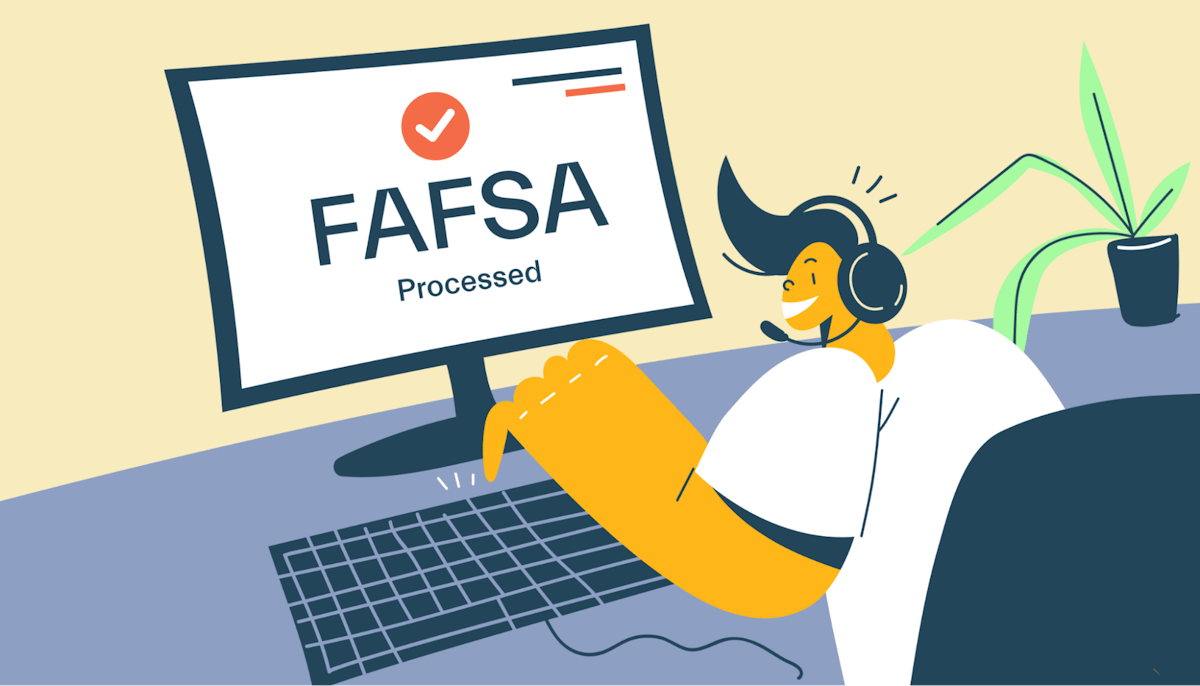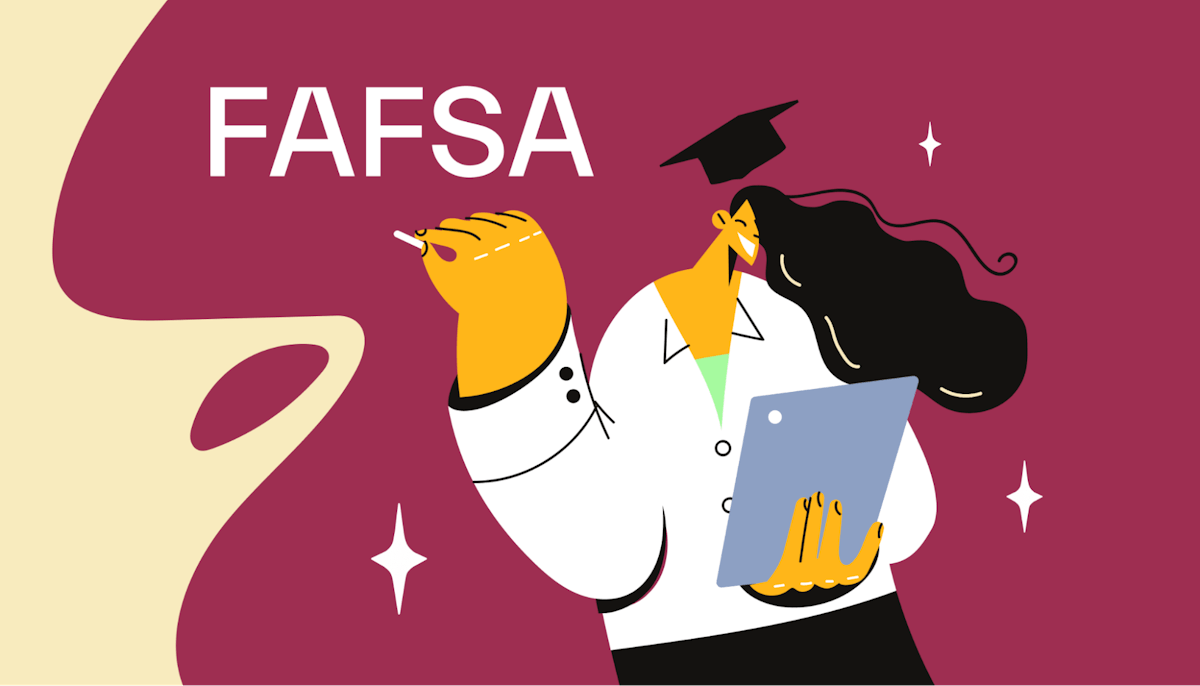FAFSA •
February 28, 2023
Is the FAFSA required?
Lots of students use the FAFSA to get aid. But do you have to fill it out, and should you ever skip it? Learn all the answers here.
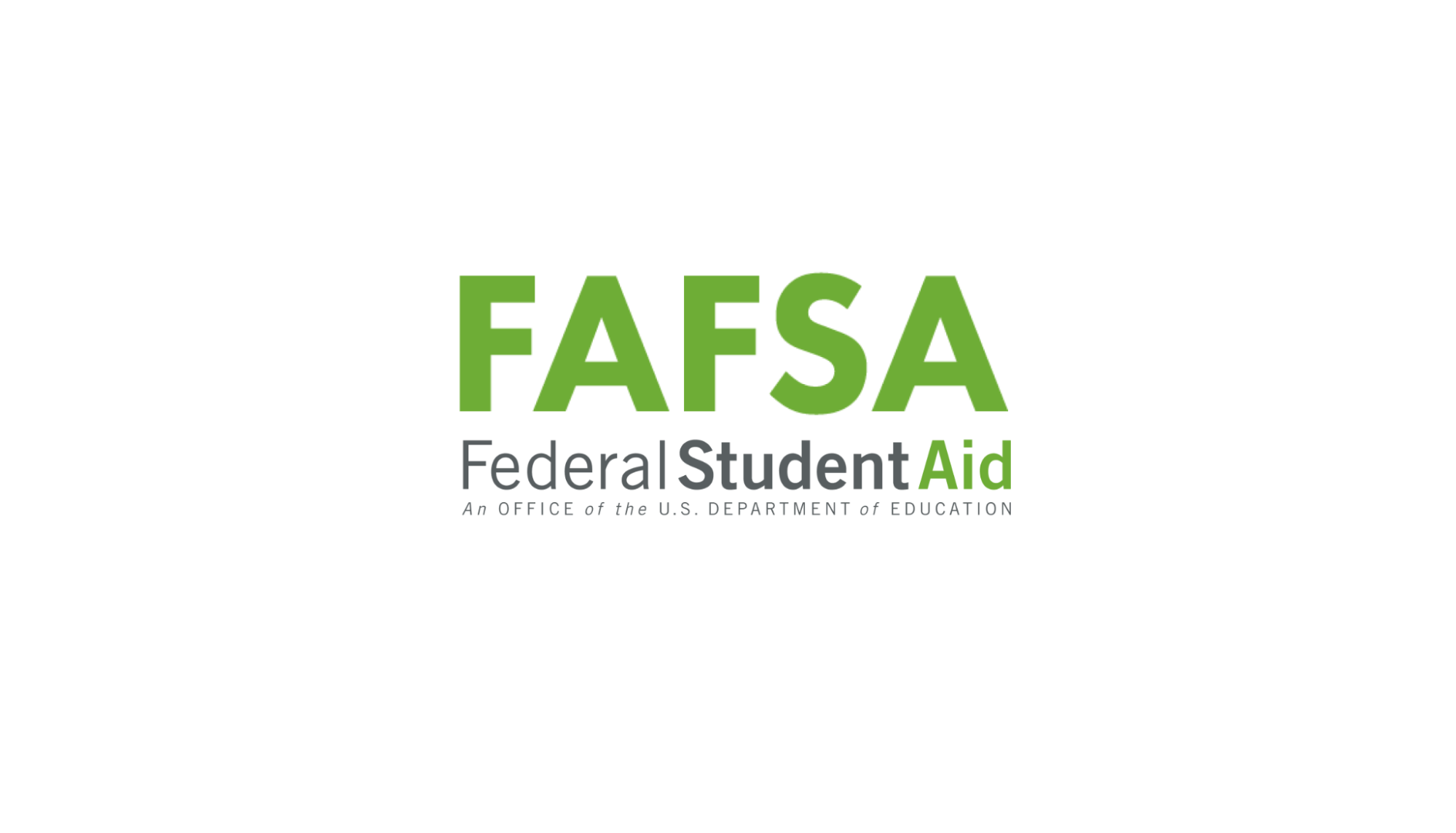
Perhaps you and your family worked hard to save up for college, or you won a full-ride scholarship, or your wealthy grandparents decided to pay your tuition.
Whatever it is, you don’t really need federal financial aid. You’ve got enough money to comfortably pay for your college education.
So do you still have to fill out the Free Application for Federal Student Aid?
The short answer is no, in most cases. But the long answer is a bit more complicated.
In this post, we’ll show you what the FAFSA is required for and explain why you should submit yours every year.
Is the FAFSA required for financial aid?
The FAFSA is required for all federal financial aid and some non-federal aid. That’s why 68% of college students complete it.
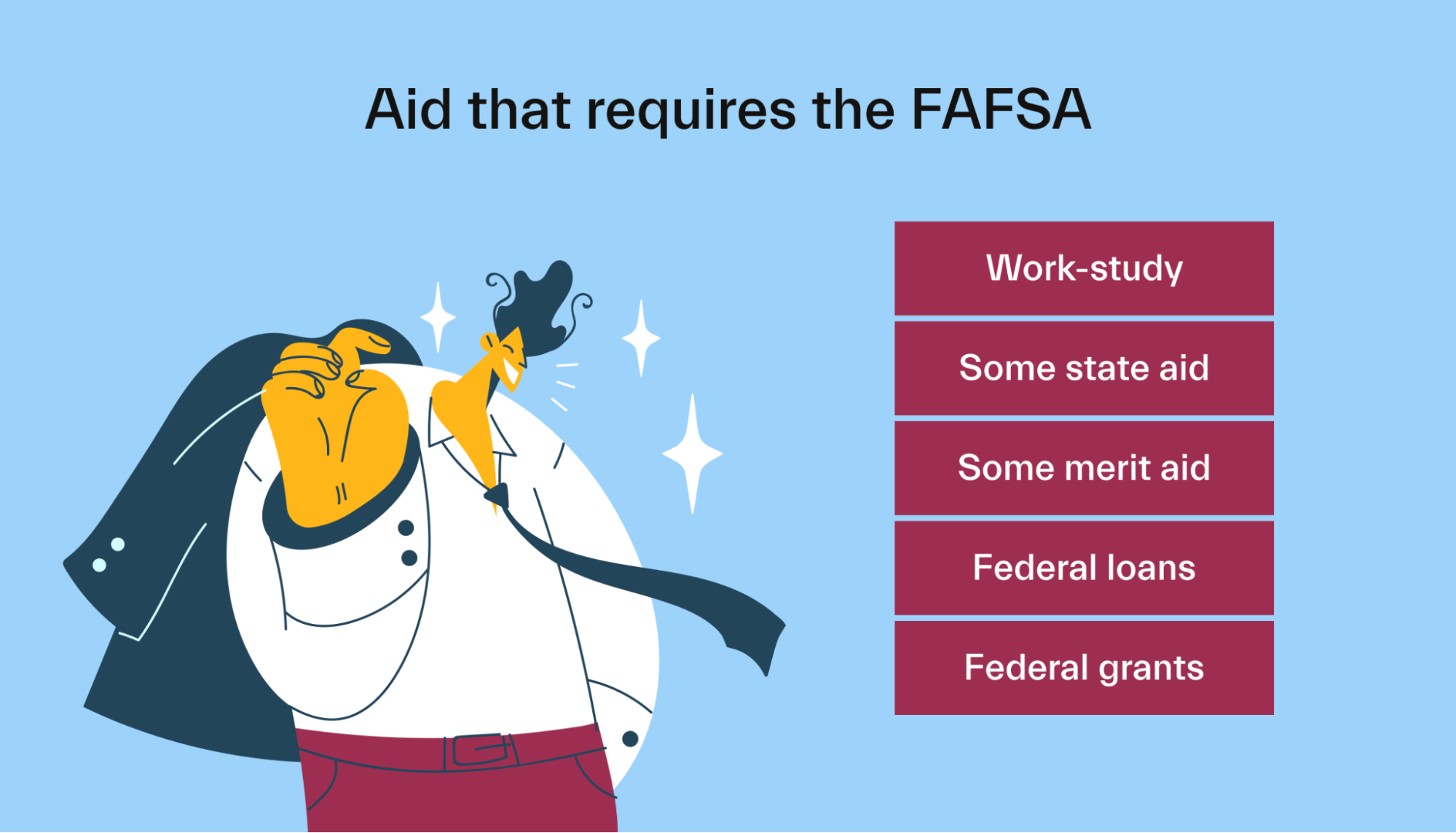
Frankly, that number should be higher because the FAFSA is free and doesn’t take all that long to submit.
So you should fill it out regardless of if you think you’ll qualify.
If you do, you could qualify for the following forms of aid:
Federal student loans
Federal student loans are the most popular form of aid. Nearly 43 million student borrowers have some form of them.
These loans come with low interest rates and, unlike private student loans, don’t care about your credit score. That means you won’t need a cosigner to get them.
Plus, they offer deferment, forbearance, and forgiveness programs.
There are 3 main types of federal loans:
Direct subsidized: These don’t accrue interest or demand repayment until 6 months after you graduate or leave the school. This grace period gives you time to find a job, so you’ll have a paycheck to cover the loan.
Direct unsubsidized: These accrue interest in school but aren’t due until the 6-month grace period ends.
Parent PLUS loans: These are for parents and grad students and require a credit check.
Federal grants
A federal grant is another federal student aid type, but it’s free money. You don’t have to pay it back except in rare circumstances. It’s also need-based, meaning you don’t have to write essays or compete against other students to get it.
Instead, the government looks at your ability to pay for college vs. your cost of attendance to see if you qualify.
The best-known federal grant is the Pell Grant, which offers up to $6,895 per year. That number changes with inflation in most years.
There are 3 other federal grants available to qualifying students:
Federal Supplemental Educational Opportunity Grants (FSEOGs)
Iraq and Afghanistan Service Grants
Teacher Education Assistance for College and Higher Education (TEACH) Grants
Work-Study
Work-study is a federal program that assigns you a job. This job is usually on campus, but it can sometimes be with off-campus nonprofit or civic organizations.
Your paycheck is used to cover some of your tuition.
Work-study places you in a major-relevant job, if possible, which can offer a nice resume boost. Also, work-study employers tend to be pretty flexible—they know you have class and homework and will schedule your shifts around those things.
Certain state-based aid programs
States offer their own forms of government aid to students going to a school in that state. However, some state-based aid programs require the FAFSA.
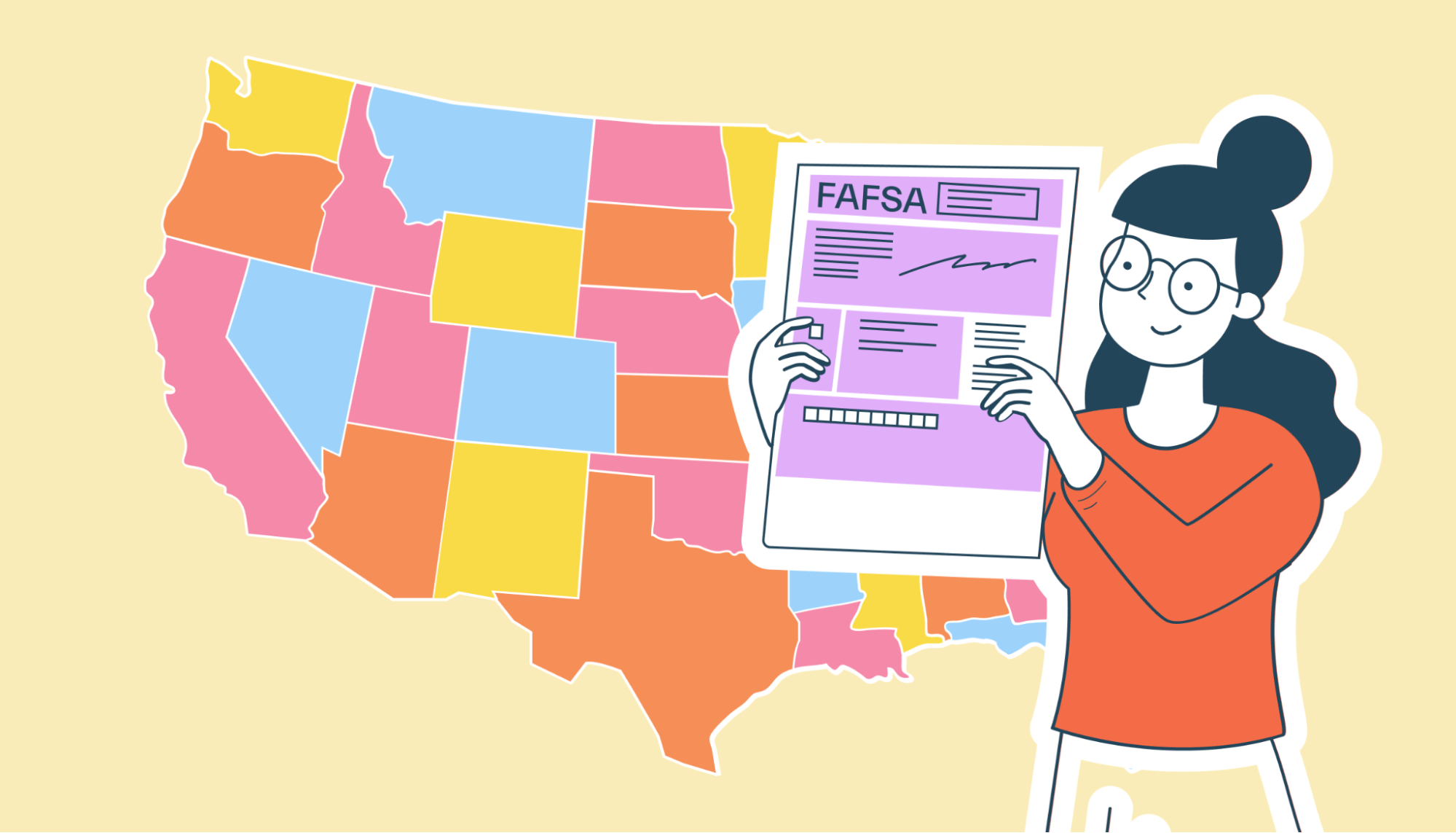
For example, the New York State Tuition Assistance Program (NY TAP) awards money to eligible New York resident students who show financial need—but you have to fill out the FAFSA for the program to consider you.
In the case of NYS TAP, you’ll have to fill out an NYS TAP-specific financial aid form after submitting your FAFSA. Other aid types may do the same or automatically consider you simply for submitting the FAFSA and enrolling in a school in that state.
Some merit-based aid
Some merit-based aid, like scholarships, may need you to fill out the FAFSA. For example, schools may hand out merit scholarships but require you to fill out the FAFSA to consider you.
And even a private organization might want to see that you did the FAFSA to consider you for an award.
Types of aid you can get without the FAFSA
The FAFSA typically doesn’t cover everything. So let’s look at some non-federal, non-FAFSA aid you can snag to help you pay for school.
Scholarships
Although some scholarships may want to know you did the FAFSA, many don’t care all that much. Scholarships are, after all, mostly merit-based.
Instead, they might be super easy, with a quick application process, or very tough, with several essays required.
Regardless, you can find these scholarships through an online search, your school’s financial aid office, or a service like Mos, which matches you with scholarships you might be eligible for.
Private grants
Most private grants won’t ask for the FAFSA, either. However, a few here and there will, so filling out the FAFSA is worth it anyway.

Private grants will instead generally ask for proof of financial need by requesting documents that show your family’s income, assets, and other information.
Tuition reimbursement
Nowadays, some employers offer tuition reimbursement as a benefit of working for them. And it’s not just those full-time office jobs, either—big companies, like Chipotle and Starbucks, offer many workers help to pay for school.
Generally, you pay for the classes first. Then, only after you pass your classes with certain grades do you get your money from your employer.
Your employer might limit the types of classes they’ll cover if you’re a full-time, degreed employee going back to school. They want to invest in you learning certain skills valuable to them, after all, so check with them on which classes count for tuition reimbursement.
FAFSA requirement FAQs
Have more questions about whether you need the FAFSA and what it’s used for? Check out our FAQs below.
Do I need the FAFSA to go to college?
Currently, most states don’t require the FAFSA in any form for high school seniors to graduate high school or go to college.
But that’s slowly changing.
Several years ago, Louisiana made the FAFSA mandatory to graduate high school, and they noticed that this increased the number of completed FAFSA applications.
In light of these findings, other states have also implemented a FAFSA requirement for high school students. More are currently considering it or have bills working their way through state governments.
You can find a full list here of states that require the FAFSA to graduate high school.
Remember, though, the FAFSA is free to fill out. You won’t have to pay money to graduate.
How many times do I have to fill out the FAFSA?
You must fill out the FAFSA for every year you want to qualify for federal financial aid.
However, you don’t have to start a new FAFSA if you did one last year. You only have to renew it, which takes less time than starting from scratch.
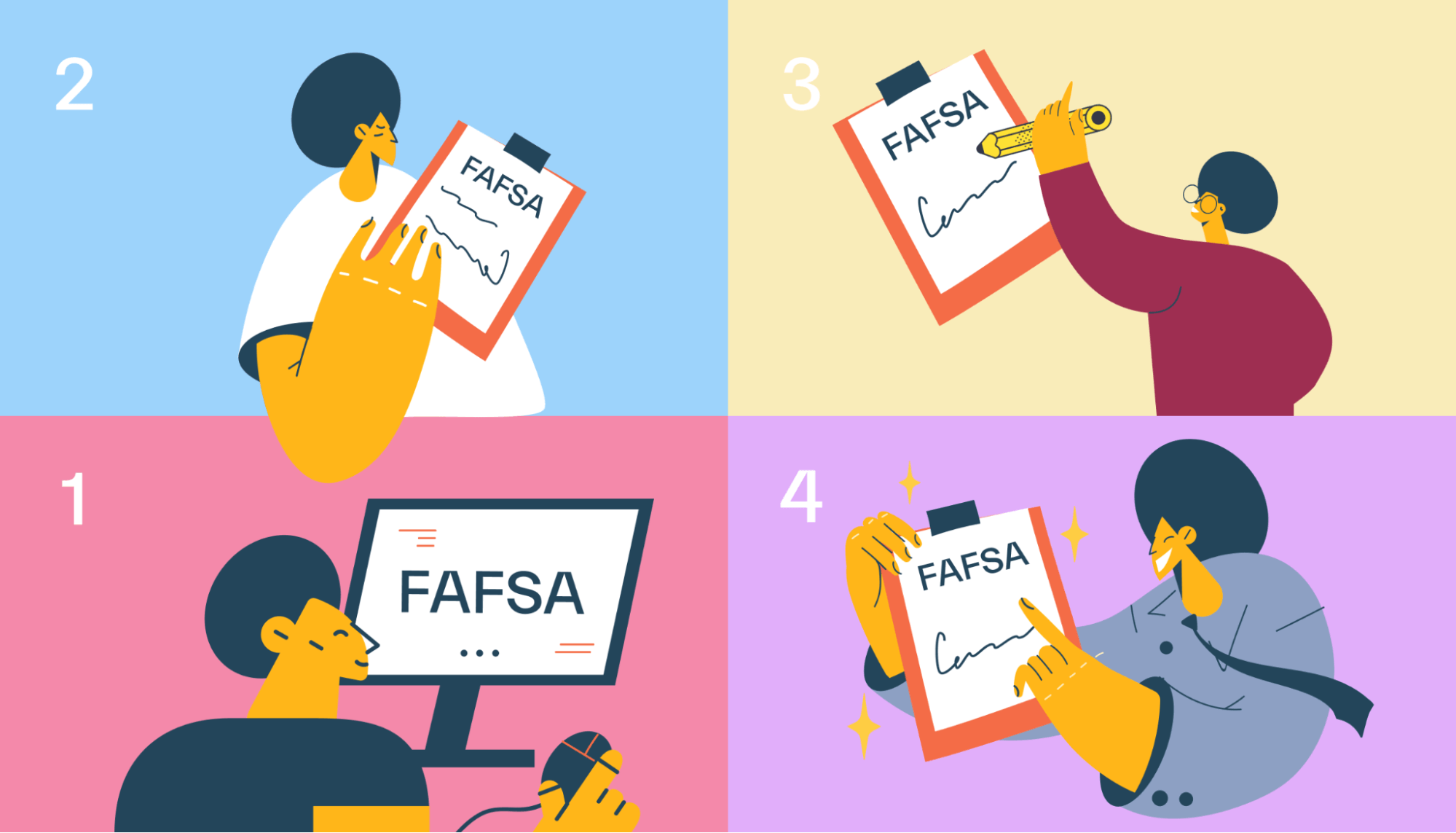
But if you hadn’t done a FAFSA before or didn’t do one last year, you might have to start a brand new application.
What if my family makes too much to qualify for the FAFSA?
The truth is, there are no real FAFSA income limits. As a result, few people, if any, “make too much money” to apply for financial aid.
Instead, the government calculates your Expected Family Contribution, soon to be changed to the Student Aid Index. This measures your family’s financial situation and ability to contribute to your college costs.
The government then weighs this against your school’s cost of attendance to calculate your aid package.
However, need-based aid programs, like federal grants, might not be available. But there’s almost no chance you’ll be denied at least some amount of student loans. Moreover, it’s free, so you might as well apply and see.
What happens if I don’t use FAFSA money?
If you don’t accept the funds you’re offered, you simply won’t receive them. Instead, the entity that awarded them will hold onto the money—with no extra work needed on your end. So if it’s a grant or scholarship, there’s rarely a reason not to accept the money.
If you do accept FAFSA money but have extra, unused cash after covering tuition and fees, you might instead receive a student refund. Your school will cut you a check, send you a direct deposit, or credit your student account with the excess money.
From there, you can use the money for college textbooks, supplies, future tuition, and other college costs.
The FAFSA’s free, so fill it out anyway
You might live somewhere that requires you to fill out the FAFSA before you go to college. In that case, well, you have to do it.
But even if the FAFSA’s not required, you might as well fill it out. It’s free and doesn’t take too long to do. Better to have it done and not need it than need it and have to scramble to get the aid you need.
Check out these 8 tips for completing the FAFSA faster and maximizing your federal aid award.
Let's get
your money
- Get paired with a financial aid expert
- Get more money for school
- Get more time to do you




